Abstract
There were 858 (37.7 percent) Q fever-infected dairy herds among the 2,277 tested in Illinois in 1963. The percentage decreased to 19.2 percent (380 of 1,975) in 1967. Reaction rates (complement-fixation test titer of 1:8 or greater) in serum samples from veterinarians decreased from 13.3 percent in 1956 to 3.9 percent in 1964 and from 3.6 percent in 1966 to 0 percent in 1968, 1970, 1972. There were 14 (2.7 percent) reactive serum samples among 526 abattoir workers tested in 1966; reaction rates were higher among workers having contact with swine (8.2 percent) than among workers having contact with cattle (1.8 percent). Two (0.1 percent) of 1,432 serum samples collected from 1967 to 1971 during preemployment examinations at another abattoir were reactive. Only two clinical cases of Q fever were reported to the Illinois Department of Public Health in the period 1963-80. All evidence evidence points to a decreasing prevalence of Q fever in Illinois.
Full text
PDF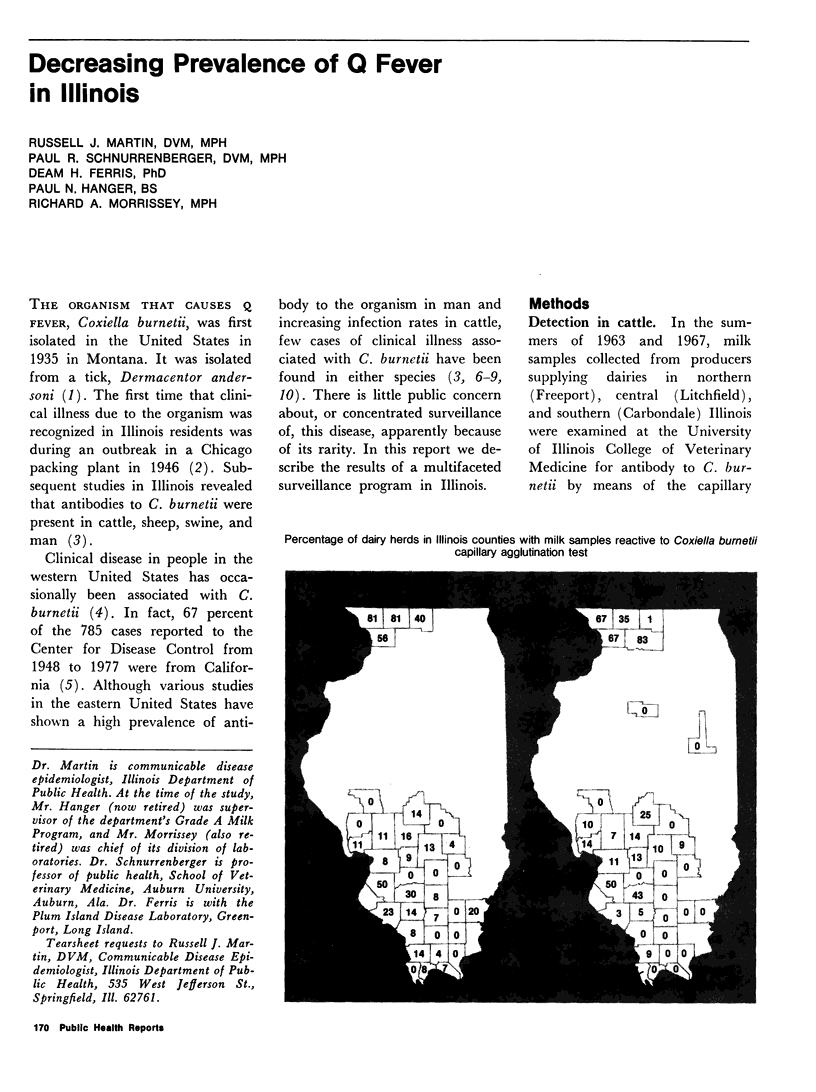
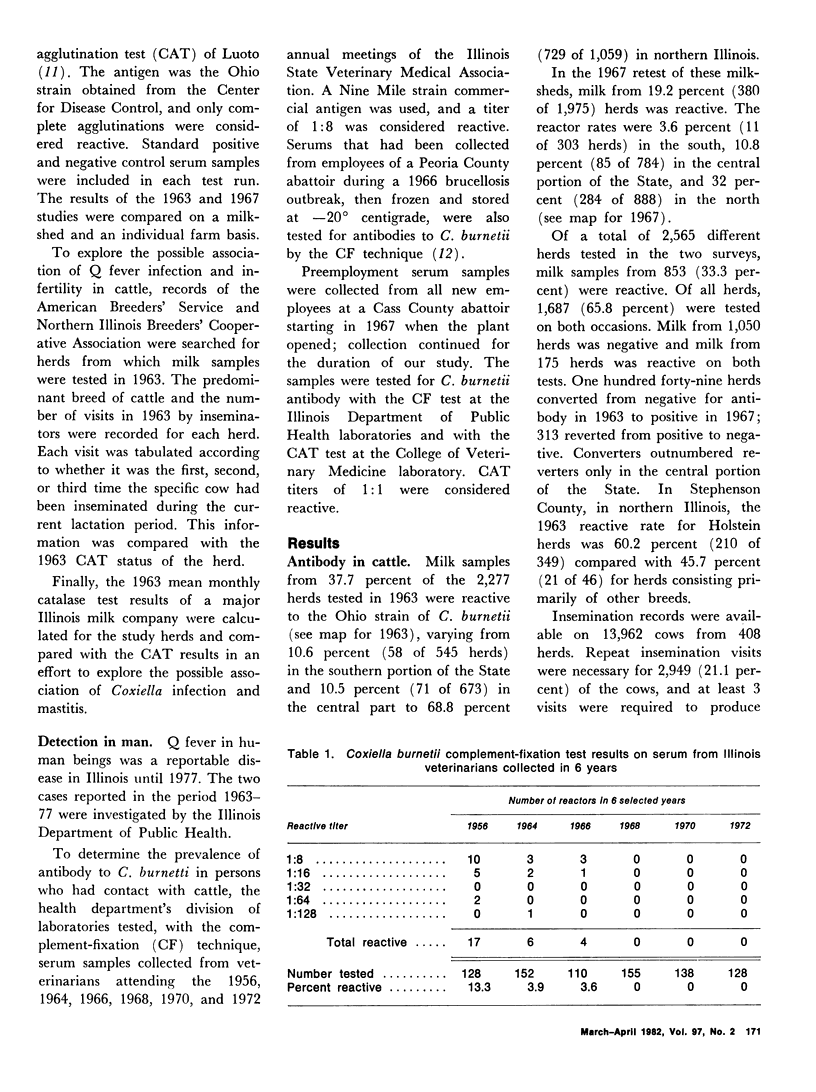
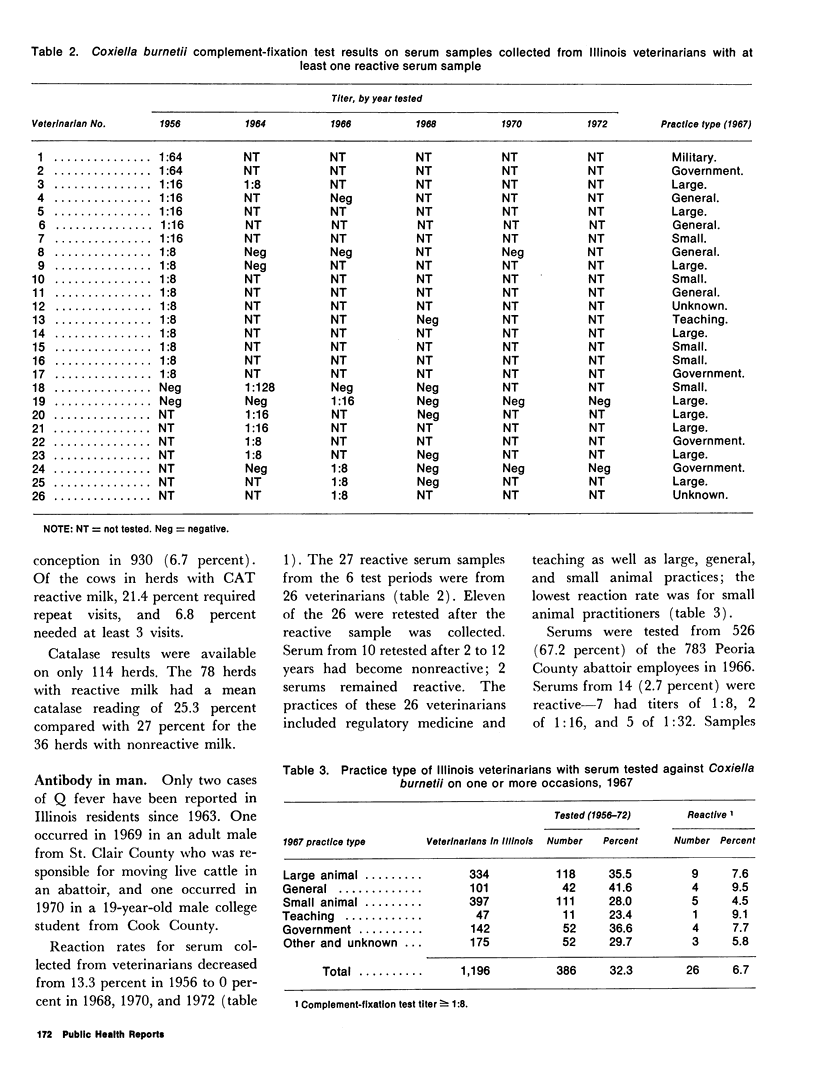
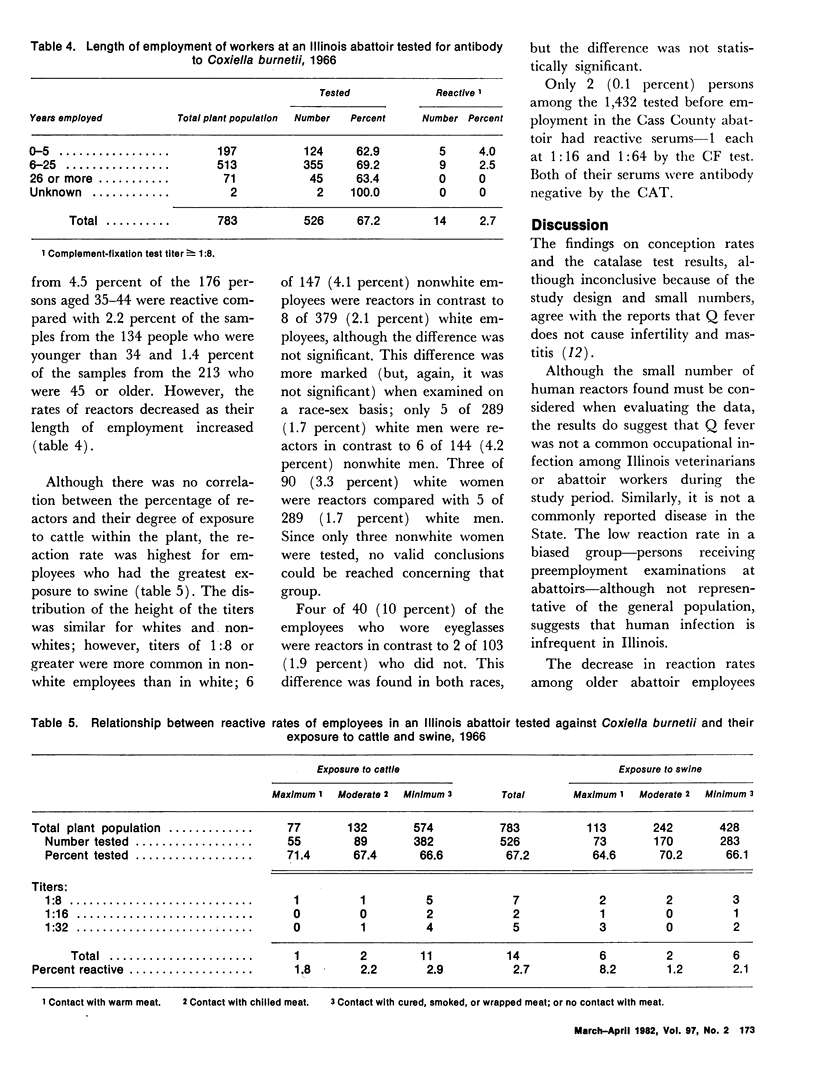
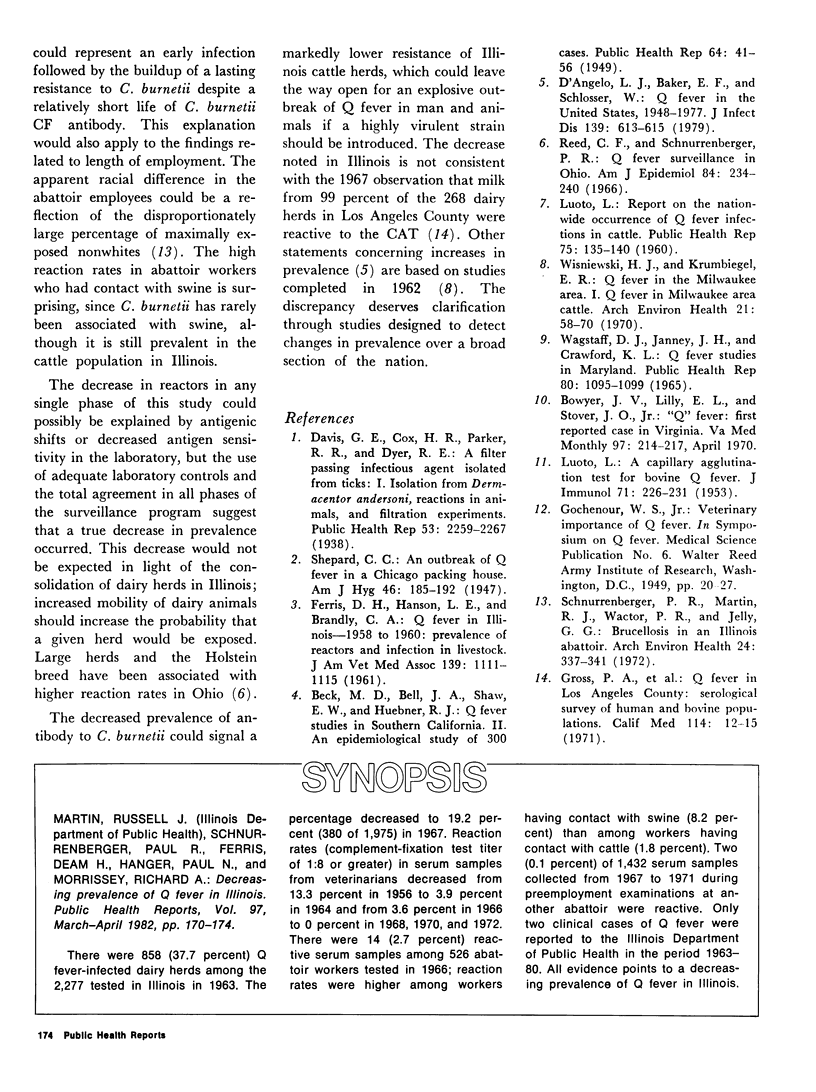
Selected References
These references are in PubMed. This may not be the complete list of references from this article.
- BECK M. D., BELL J. A. Q fever studies in Southern California; an epidemiological study of 300 cases. Public Health Rep. 1949 Jan 14;64(2):41–56. [PMC free article] [PubMed] [Google Scholar]
- Bowyer J. V., Lilly E. L., Stover J. O., Jr "Q" fever--first reported case in Virginia. Va Med Mon (1918) 1970 Apr;97(4):214–217. [PubMed] [Google Scholar]
- D'Angelo L. J., Baker E. F., Schlosser W. From the Center for Disease Control: Q fever in the United States, 1948--1977. J Infect Dis. 1979 May;139(5):613–615. doi: 10.1093/infdis/139.5.613. [DOI] [PubMed] [Google Scholar]
- FERRIS D. H., HANSON L. E., BRANDLY C. A. Q fever in Illinois--1958 to 1960. Prevalence of reactors and infections in livestock. J Am Vet Med Assoc. 1961 Nov 15;139:1111–1115. [PubMed] [Google Scholar]
- Gross P. A., Portnoy B., Salvatore M. A., Kogan B. A., Heidbreder G. A., Schroeder R. J., McIntyre R. W. Q fever in Los Angeles County. Serological survey of human and bovine populations. Calif Med. 1971 Feb;114(2):12–15. [PMC free article] [PubMed] [Google Scholar]
- LUOTO L. A capillary agglutination test for bovine Q fever. J Immunol. 1953 Oct;71(4):226–231. [PubMed] [Google Scholar]
- LUOTO L. Report on the nationwide occurrence of Q fever infections in cattle. Public Health Rep. 1960 Feb;75:135–140. [PMC free article] [PubMed] [Google Scholar]
- Reed C. F., Schnurrenberger P. R. Q fever surveillance in Ohio. Am J Epidemiol. 1966 Sep;84(2):234–240. doi: 10.1093/oxfordjournals.aje.a120636. [DOI] [PubMed] [Google Scholar]
- Schnurrenberger P. R., Martin R. J., Wactor P. R., Jelly G. G. Brucellosis in an Illinois abattoir. Arch Environ Health. 1972 May;24(5):337–341. doi: 10.1080/00039896.1972.10666101. [DOI] [PubMed] [Google Scholar]
- Wagstaff D. J., Janney J. H., Crawford K. L., Dimijian G. G., Joseph J. M. Q fever studies in Maryland. Public Health Rep. 1965 Dec;80(12):1095–1099. [PMC free article] [PubMed] [Google Scholar]
- Wisniewski H. J., Krumbiegel E. R. Q fever in the Milwaukee area. I. Q fever in Milwaukee area cattle. Arch Environ Health. 1970 Jul;21(1):58–62. doi: 10.1080/00039896.1970.10667192. [DOI] [PubMed] [Google Scholar]


